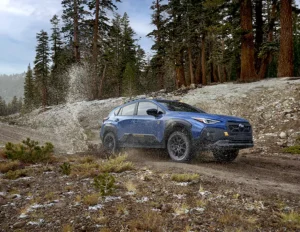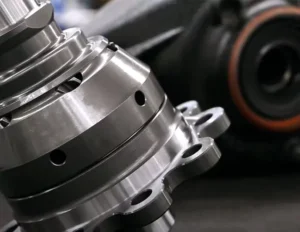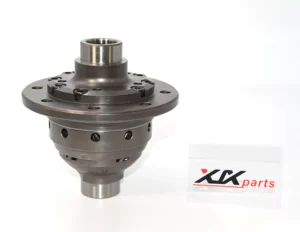
For 4×4 enthusiasts, understanding the different types of differentials is essential to optimizing the vehicle’s performance on different terrains. In this article, we’ll take a deep dive into whether a locking differential or a limited-slip differential is right for you.
Locking Differential
A locking differential, or locker, is designed specifically for challenging off-road situations. Its primary function is to ensure that both wheels on the same axle turn at the same speed, regardless of traction. This is accomplished through the use of various mechanisms such as gears, clutches, or electronic control systems.
The main benefit of a locking differential is its ability to provide maximum traction in demanding conditions. By preventing power from transferring to the wheel with the least resistance, a locking differential ensures that both wheels receive equal torque. This feature enables the vehicle to overcome obstacles and traverse challenging terrain that would cause other differentials to lose traction. However, it is important to note that using a locking differential on regular roads or high-traction surfaces may cause drivability issues because it limits the differential between the wheels.
While a locking differential can provide maximum traction in challenging off-road situations, it also has some potential disadvantages. One of the main limitations is that it limits the differential between the wheels, which can cause drivability issues on regular roads or high-traction surfaces. The locking differential ensures that both wheels on the same axle turn at the same speed, eliminating the ability to make smooth turns, potentially causing excessive tire wear and increased stress on driveline components. Additionally, engaging a locking differential while turning sharply on a road surface may cause the vehicle to become stuck, resulting in difficulty in handling and possible driveline damage. Therefore, differential locks must be used with caution, especially in off-road situations where maximum traction is required, while being mindful of their limitations in everyday driving conditions.
Limited Slip Differential
Limited Slip Differentials (LSDs) The goal is to maximize traction while maintaining drivability. LSDs use a combination of gears, plates, or viscous fluids to transfer torque to both drive wheels based on available traction.
What makes a limited slip differential unique is its ability to adapt to different terrains and driving conditions. A limited slip differential can adjust the torque distribution to provide varying degrees of traction when needed. This flexibility allows it to perform admirably in a variety of situations, from regular road driving to light off-roading. However, it is important to note that while limited slip differentials provide enhanced traction, they may not provide the same grip as a locking differential in challenging off-road scenarios.
While limited slip differentials can enhance traction and adaptability to different terrains, they also have some potential drawbacks to consider. One of these limitations is that a limited slip differential may not provide the same level of grip as a locking differential in challenging off-road situations. The torque distribution in a limited slip differential is not as tightly locked as a locking differential, which can sometimes result in a slight reduction in overall traction. Additionally, limited-slip differentials may require more maintenance and upkeep than open differentials because the gears, plates, or viscous fluid used to transfer torque can wear out over time. It is important to weigh these disadvantages against the improved traction and drivability that limited-slip differentials provide in a variety of driving conditions.
Conclusion
Locking differentials excel in extreme off-roading, but compromise on-road drivability. Limited-slip differentials strike a balance between improved traction and smooth handling, making them suitable for a wide range of driving conditions. When choosing a differential for your 4×4 vehicle, consider the type of terrain you frequently encounter and your driving preferences. Combining the unique characteristics of locking and limited-slip differentials, you can choose the option that best suits your off-road requirements.



